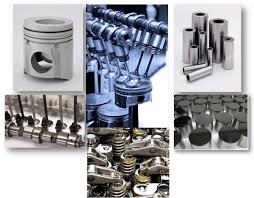Physical Vapor Deposition, also known as Thin Film Deposition, provides durable and brilliant finishes through an environmentally-friendly process. These decorative PVD coatings can appear on variety of surfaces including:

Plumbing fixtures
Household appliances
Automotive trim
Medical instruments
Sporting equipment
Door hardware
Outdoor/indoor lightingThe coating process to create these finishes involve solid metal being vaporized to be used on these surfaces.Advantages of Using These CoatingsProfessional use of the PVD process offers the following benefits:
Flexibility – coating substrate materials, including those that are heat sensitive, is advantageous. Plastic or zinc can receive a quality finish.
Experienced professionals use the process to coat small components in large volume, or large complex shapes.
Use of sophisticated equipment provides precision control to ensure each batch, or group of large items, have a consistent finish.How the Process WorksThe PVD process involves mixing high purity gases to obtain different colors. These gases are also used to combine the strength of wear and corrosion resistance with a decorative finish. Amazingly, the mixture becomes a thin film that protects the surface while enhancing its functional and visual performance.Although the coating process produces a scratch-free surface on chrome plating, it does not fill or level the same as an electroplated finish. Holes, dents or other imperfections might still be visible.Still, use of this process is competitively matched with alternative technologies such as:
Powder coating
E-coating
ElectroplatingCommon chrome plated materials of brass, steel, zinc and aluminum are not dulled from using PVD. Additionally, satin or brushed surfaces are given a polished finish; polished or mirror surfaces produce PVD polished surfaces.Why it is Worth Using PVDSome might wonder whether PVD is worth it. Most answers will include a resounding “yes.” The super-hard coating is much more durable coating available for so many different surfaces. Essentially, the process leaves superior quality that can outlast traditional finishes.Different colors are also available to blend with existing areas. It largely depends on the targeted metal that will be evaporated. Typically, the range of colors can include: gold or brass tones, copper and bronze tones, black to grey, nickel or chrome. All colors can be topped with a satin, matt or polished finish.Another benefit to PVD is the ease of keeping it clean without the use of bleach or scouring pads. Regular maintenance is using mild soap and water on a soft cloth. Products designed to remove rust or tarnish – that also contains caustic agents, phosphoric and/or hydrofluoric acid should be avoided.










Comments are closed.